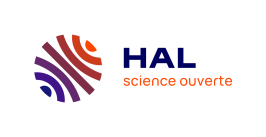Détail du document
Identifiant
oai:HAL:hal-02964988v1
Sujet
Avian influenza Vaccination Poultry Evaluation France [SDV]Life Sciences [q-bio] [SDV.SPEE]Life Sciences [q-bio]/Sa...Auteur
Hautefeuille, Claire Azzouguen, Billal Mouchel, Simon Dauphin, Gwenaëlle Peyre, MarisaLangue
enEditeur
HAL CCSD;Elsevier
Catégorie
sciences : sciences du vivant
Année
2020
Date de référencement
08/12/2023
Mots clés
types protocols tool sectors guinea levels sector vaccine control level hatchery evacs efficient vaccination france poultry strategies avian influenzaRésumé
International audience; France recently faced two epizootic waves of highly pathogenic avian influenza (HPAI) in poultry (H5N6 in 2015–2016 and H5N8 in 2016–2017), mainly in the fattening duck production sector.
Vaccination against avian influenza (AI) is currently not authorised in France even though its potential benefits were discussed during these epizootic events.
The objective of this work was to evaluate the potential efficiency of different vaccination strategies that could be applied against AI in France.The EVACS tool, which is a decision support tool developed to evaluate vaccination strategies, was applied in several French poultry production sectors: broiler, layer, turkey, duck and guinea fowl.
EVACS was used to simulate the performance of vaccination strategies in terms of vaccination coverage, immunity levels and spatial distribution of the immunity level.
A cost-benefit analysis was then applied based on EVACS results to identify the most efficient strategy.
For each sector, vaccination protocols were tested according to the production type (breeders/production, indoor/outdoor), the integration level (integrated/independent) and the type of vaccine (hatchery vaccination using a recombinant vaccine/farm vaccination using an inactivated vaccine).
The most efficient protocols for each sector were then combined to test different overall vaccination strategies at the national level.
Even if it was not possible to compare vaccination protocols with the two vaccines types in “foie gras” duck, meat duck and guinea fowl production sectors as no hatchery vaccine currently exist for these species, these production sectors were also described and included in this simulation.Both types of vaccination (at hatchery and farm level) enabled protective immunity levels for the control of AI, but higher poultry population immunity level was reached (including independent farms) using hatchery vaccination.
We also showed that hatchery vaccination was more efficient (higher benefit-cost ratio) than farm vaccination.
Sufficient and homogeneously spatially distributed protective levels were reached in the overall poultry population with vaccination strategies targeting breeders, chicken layers and broilers and turkeys, without the need to include ducks and guinea fowls.
However, vaccination strategies involving the highest number of species and production types were the most efficient in terms of cost-benefit.This study provides critical information on the efficiency of different vaccination strategies to support future decision making in case vaccination was applied to prevent and control HPAI in France.
Hautefeuille, Claire,Azzouguen, Billal,Mouchel, Simon,Dauphin, Gwenaëlle,Peyre, Marisa, 2020, Evaluation of vaccination strategies to control an avian influenza outbreak in French poultry production networks using EVACS tool, HAL CCSD;Elsevier

Systematic Feature Design for Cycle Life Prediction of Lithium-Ion Batteries During Formation
cycle prediction framework feature design features life formation

